General Test
Showing 49–64 of 90 results
-
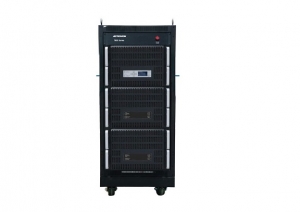
AE Techron Model 7800 High Power Precision Amplifier
The AE Techron 7800-Series AC power amplifiers are durable, four-quadrant, DC-enabled, low-noise, wide-bandwidth amplifiers. The 7800 Series Amplifiers are a great solution if bandwidth and/or system noise is a problem. They are able to drive low-impedance loads at frequencies of up to 60kHz. Because they utilise a linear circuit topology, the AE Techron 7800 series amplifiers have no switching noise in their output and very low radiated EMI. This results in THD and noise floors that are much lower than what is possible with traditional switch mode amplifiers, making them ideal for applications that require either high precision or, because of sensitive measurements, cannot tolerate the radiated noise associated with switch mode amplifiers.
The 7800 series amplifiers are tough, both physically and electrically. The 7800 series models have been used for conducting experiments on a Navy warship, controlling a magnetic field in a fusion experiment, and driving DUTs while absorbing back EMF when there is a failure.
- Bandwidth: DC to 60KHz
- Voltage Output: 500Vp
- Current Output: 400Ap (800Ap Short Period)
- Power: 10kVA, 15kVA or 20kVA
-

AE Techron Model 7700 Audio Bandwidth Amplifier
AE Techron’s 7700-Series amplifiers offer great power and flexibility. The series consists of three models; each model can be used as a free-standing gain block or combined in multiples to achieve high voltage (300 V RMS at 50 A RMS) or high current (up to 340A at 13.5 VDC continuously).
The 7794 was designed with a very low output impedance and is able to produce up to 60A continuous at 13.8 VDC, making it an excellent battery substitute for transient immunity testing. It is also capable of producing the 80V surges required for DO-160G section 16.6.2.4 abnormal surge testing and is well suited for ISO 7637 pulse 2b and 4 testing.
The 7796, when run in controlled-current mode, is a perfect choice to drive medium to large diameter Helmholtz coils and radiatiors like those specified in Ford FMC1278 (RI140, RI150).
The 7796HC can be used to simulate ripple noise, drop outs, surges and ground shift noise as required by a variety of standards for DC powered electronics in the aviation and automotive industries. With configurations capable of up to 600A, a DC-150 kHz bandwidth, and the ability to both source and sink, the 7796HC is your best solution for high-current DC Conducted Immunity testing.
- Up to 5000 watts RMS power output
- Small signal response up to 250KHz
- Up to 85A at 13.5 VDC
- Series or Parallel system capability
- Output voltages up to ±180 Vp
-
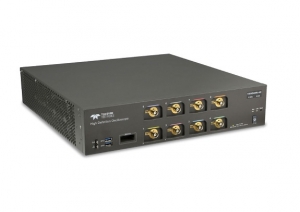
NEW Teledyne LeCroy T3DSO4000L-HD Low Profile Digital Oscilloscope
The Teledyne LeCroy T3DSO4000L-HD Series of Low Profile Oscilloscope features 4-channel (1U High) and 8-channel (2U High) models with Analogue bandwidth option from 500 MHz to 2 GHz. The low profile form factor combined with 12-bit High Resolution ADCs and Low Noise front end provides an impressive noise performance to cover a wide range of measurement applications. Each model offers a maximum Sample Rate of 10GSa/s per channel and a maximum Memory depth of 500Mpts. It can be remotely controlled over LAN with its built-in web server and a complete SCPI command set over the standard 1000M LAN connection. An impressive display of measurement and Math functions along with a built-in 25MHz Arbitrary Waveform Generator and 16 Channel Logic Analyzer as standard are features of the T3DSO4000L-HD.
Key Features:
- 4/8 Analogue Channels + 1 external trigger
- Analogue Channel Bandwidth: up to 2GHz; Real-Time Sampling Rate of up to 10GSa/s
- Vertical Resolution: 12-bits
- Memory Length: 500Mpt
- Low Noise floor: 153 uVrms at full bandwidth of 2GHz
- Waveform capture rates up to 170,000 wfm/s (normal mode), and 750,000 wfm/s (sequence mode)
- Supports 256-level intensity grading and colour temperature display modes
- Intelligent trigger: Edge, Slope, Pulse, Window, Runt, Interval, Dropout, Pattern, Qualified, Nth edge, Setup/hold, Delay and Video (HDTV supported)
- Serial Bus triggering and decoder, supports protocols I2C, SPI, UART, CAN, LIN, CAN FD, FlexRay, I2S, MIL-STD-1553B, SENT and Manchester as standard
- Segmented Acquisition (Sequence) mode, dividing the maximum record length into multiple segments (up to 80,000),
- History waveform record (History) function
- Automatic measurements on 50+ parameters, supports statistics with Histogram, Track, Trend, Gating measurement, and measurements on Math, History, Memory and Ref
- 4 Math traces (8 Mpts FFT, addition, subtraction, multiplication, division, integration, differential, square root, etc.), supports formula editor
-

Arbin HPS Series Ultra Precision Battery Analysis System
Arbin’s HPS Series is a low current Battery Tester with High Precision measurement capabilities to detect minute signatures of battery degradation trends early in the testing life cycle. This greatly reduces the battery development cycle. The HPS will assist battery development for those involved in material research. The HPS allows researchers to conduct high precision coulombic efficiency tests on Batteries or Capacitors with precision reaching below 10 ppm. Arbin’s MultiZone Temperature Chamber provides constant temperature condition.
Features:
- Voltage Range: -6V to 6V
- Current Ranges: 5A/100mA/10mA/1mA
- Channels: 2
- Resolution 24 Bit
- 10ppm Measurement Accuracy
- Comprehensive Battery Test Software
-
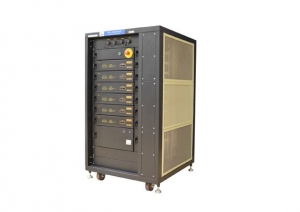
Arbin LBT Series Precision Battery Analysis System
Arbin’s Laboratory Battery Testing (LBT) series commercializes technology established during a 3?year ARPA-E project developing ultra?high precision testing systems. This product consists of independent potentiostat/galvanostat channels for testing batteries and other energy storage devices, and is intended to provide an economical solution for applications requiring high?precision measurements and fast data sampling. All Arbin testing systems come with a PC preloaded with our MITS Pro and Data Watcher software for creating test profiles, real?time data monitoring, and data plotting & analysis.
- Cell Voltage up to 10V
- Cell Current up to 2500A
- Ability to test up to 96 cells with a single chassis
- Comprehensive Battery Test Software
-
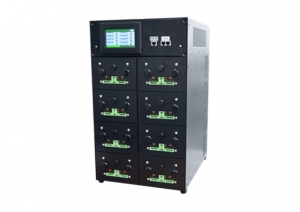
Arbin Cell Isolating Thermal Safety Chamber
Arbin’s Cell-Isolating Thermal Safety Chamber (MZTC) is a battery test chamber with 8 independent temperature chambers in 1. Insulation and protection between each chamber provides greater temperature control and a safe testing environment by isolating each cell or pair of cells, as well as making connections easy. The compact, independent battery test mini-chambers utilize state-of-the-art thermal management techniques to ensure a stable and uniform temperature for all cells without hot/cold areas that over-sized chambers suffer. Isolating cells this way provides greater independence to access and monitor the devices under test, and prevents a weak or failed cell from affecting others during testing. Over 10 different battery trays are available to accommodate a variety of cell types and make connections easy, along with racks to hold up to 6 MZTC’s (up to 192 cells).
- 8 Independent Mini Chambers
- Isolated Chambers
- Unique Temperature Setpoints
- Uniform Temperature Thermal Management
- Integration with Arbin Battery Testers using MITS Pro Software
-
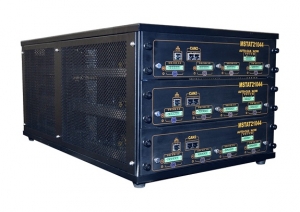
Arbin MSTAT Multi-Channel Potentiostat/Galvanostat
Arbin’s Multi-Channel Potentiostat/Galvanostat (MSTAT) system is designed for high performance electrochemical research of battery materials and advanced battery cell testing. Each channel is an independent potentiostat/galvanostat and gives users full control of test profiles and data logging to offer unmatched flexibility. No other potentiostat manufacturer offers range of channels, voltage, current, and feature-set as Arbin. Researchers and startup companies who begin working with Arbin can continue to use our battery testing systems and software solutions as they grow and expand.
The Arbin MSTAT provides true bipolar circuitry to ensure cross-zero linearity with no switching time between charge and discharge. MSTAT hardware provides both digital and analog voltage control. Digital control maximizes the safety of battery cycling and can handle dynamic device resistance, while analog control enables the fast response and stability necessary for electrochemical applications.
- Voltage Range: +/-5V
- Current Range: 5A
- Measurement Resolution: 24-bit (1 part in 16,777,216)
- Measurement Precision: <40ppm
- Control Accuracy: <0.01%
- Minimum Step Time: 5ms
- Input Impedance: 100G Ohm
- Data Logging Rate: 2000 points per second, per system
- Connection for PC: TCP/IP (Ethernet)
- Ventilation Method: air-cooled with variable speed fans
-
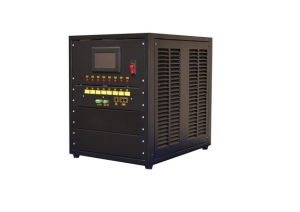
Arbin Redundant Safety Monitoring System
Arbin’s new Redundant Safety Monitoring System (RSMS) is compatible with any manufacturer’s battery testing systems. The key word is redundant. Many test equipment manufacturers claim to have the same level of safety as Arbin testers with multiple layers of of safety limits, communication watchdog, internal relays to disconnect the device under test, etc. Comprehensive features like these do a great job of protection, but some facilities require a fully independent 3rd party system to monitor testing when people are not present such as overnight or on weekends. This is where the RSMS becomes necessary. Plus it’s never a bad idea to have an extra layer of protection.
- Fully indepentent from any existing test stand (any brand)
- Multiple, independent channels per RSMS unit
- User-configurable safety limits for: Voltage, Current, Temp, & Power
- View real-time status of each channel (safe vs. unsafe)
- Configurable alarm signals, including external signal
-
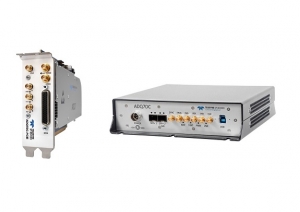
Teledyne SP Devices ADQ7DC High Performance 14-Bit Digitizer
The Teledyne SP-Devices ADQ7DC offers 14 bits Vertical Resolution in either Single or Dual Channel mode with 10 or 5 GSPS Sampling Rate respectively improving the Resolution in High-Sampling Rate applications beyond what was previously possible. The DC-coupled front-end supports variable DC offset and contains a user-programmable digital noise-reduction filter. It also offers 3 GHz Analogue input bandwidth and therefore supports a wide range of sensors and applications. Stand alone firmware packages simplify operation and offer time savings by providing a rich set of real time application specific functions without any need for FPGA firmware development. The open onboard Xilinx Kintex Ultrascale FPGA offers available resources for custom real-time digital signal processing (DSP).
Key Features:
- 3GHz Bandwidth
- Sampling Rates to 10GS/s
- 14 Bit Resolution
- 1-2 Channels
- Input Voltage Range: 1 Vpp
- USB 3.0, 10GbE, PCIe, PXIe, MTCA.4
- Peer to Peer steaming to GPU
- Multi Channel Synchronisation
- Extensive Software Suites including stand alone operation
- Drivers for C/C++, MATLABTM and more
- Digitiser Studio Software
-
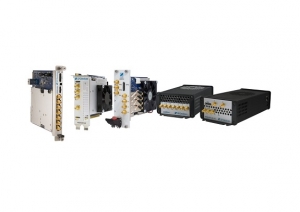
Teledyne SP Devices ADQ14 High Performance 14-Bit Digitizer
The Teledyne SP-Devices ADQ14 is a 14-bit Digitizer family with 1, 2, or 4 channels and 0.5, 1, or 2 GSPS Sampling Rate. It is also available with either AC or DC coupling (ADQ14AC and ADQ14DC) and comes in six different form factors. This simplifies integration and enables cost-efficient system-level design. The ADQ14 offers AC- or DC-coupling and variable DC-bias. It is also available with variable voltage input range. This combined with high analogue input bandwidth makes it support a wide range of sensors. The on-board FPGA is made available to the user through a firmware development kit. Stand-alone firmware packages simplify operation by providing a rich set of application-specific real-time functions without any need for firmware development.
Key Features:
- Up to 1.2 GHz Bandwidth
- Sampling Rates: 0.5, 1, 2 GSPS per channel
- 14 Bit Resolution
- 1, 2, 4 Channels
- Coupling: AC or DC
- Programmable DC-offset: Full signal range
- High-precision clock/trigger with multiple modes and sources
- USB 3.0, 10GbE, PCIe, PXIe, MTCA.4
- Multi Channel Synchronisation
- Extensive Software Suites including stand alone operation
- Drivers for C/C++, MATLABTM and more
- Digitiser Studio Software
-
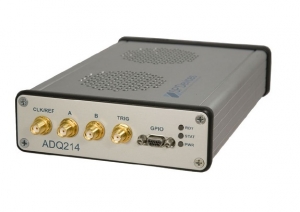
Teledyne SP Devices ADQ214 High Performance 14-Bit Digitizer
The Teledyne SP-Devices ADQ 214 Digitizer features Dual Channels, 14-bit Resolution, 400 MSPS capture rate with 850 MHz analogue input bandwidth, and a memory buffer of 64 MSample per channel. The combination of High Speed, High Resolution and Wide Bandwidth makes it ideal for broadband applications such as IF sampling of RF signals and high-speed data recording. Excellent Spectral Purity in combination with Low Noise also makes the ADQ 214 ideal for noise measurements. The ADQ 214 comes with an AC-coupled AFE with the bandwidth 10 Hz – 850 MHz, which is optimized for Spectral Purity over several Nyquist bands. The AC AFE is suitable for RF/IF Sampling and Pulse measurements. There is also a software selectable DC coupled AFE with the bandwidth 350MHz which is optimized for Base Band Signaling and High Speed Data Recording
Key Features:- DC – 850 MHz Bandwidth
- Sampling Rates: 70 – 400 MSPS
- 14 Bit Resolution
- Dual Channels
- USB 2.0 & PXIe
- Extensive Software Suites including stand alone operation
- Drivers for C/C++, MATLABTM and more
- Digitiser Studio Software
-

Teledyne SP Devices ADQ214-DCLN High Performance 14-Bit Low Noise Digitizer
The Teledyne SP-Devices ADQ214-DCLN Digitizer features Dual Channels, 14-bit resolution, 400 MSPS capture rate and is optimized for Highly Accurate Low Noise measurements. The ADQ214-DCLN is ideal for Phase Noise measurements and wideband IQ-Receivers.
The DC-coupled Low Noise front-end is optimized for spectral purity. The anti-aliasing 100 MHz low-pass filter prevents high frequency noise from being aliased into the signal band. The ADQ214-DCLN includes a digital real-time decimation filtering for noise suppression and accurate analysis. The ADQ 214-DCLN employs two Xilinx SX50T Virtex 5 FPGAs (XC5VSX50T-1). The user can access these FPGAs and implement customized digital signal processing by purchasing the ADQ Development Kit. This kit contains everything that is needed to get started with the FPGA development, and also includes examples and documentation.
Key Features:- DC to 100MHz Bandwidth
- Sampling Rates: 400 MSPS
- 14 Bit Resolution
- Single Channels
- Noise level at 100 kHz-170 dBV/?(Hz)
- USB 2.0 & PXIe
- Extensive Software Suites including stand alone operation
- Drivers for C/C++, MATLABTM and more
- Digitiser Studio Software
-
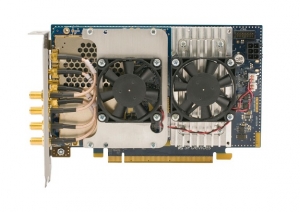
Teledyne SP Devices ADQ1600TD High Performance 14-Bit Time Domain Digitizer
The Teledyne SP-Devices ADQ1600TD is a world-leading 14 bit Digitizer optimized for Time-Domain pulse capture. With its unique 1600 MSPS capture rate, enabled by SP Devices’ ADC interleaving technology ADX, the ADQ1600TD opens for demanding measurements such as time-domain pulse capture and high-speed data recording. The AFE of the ADQ1600TD is AC-coupled and optimized for low background noise over a large bandwidth. The adjustable bias together with the Digital Baseline Stabilization (DBS) technology increases the dynamic range for uni-polar pulses.
Key Features:
- 680MHz Bandwidth
- Sampling Rates: 1.6 GSPS
- 14 Bit Resolution
- Single Channels
- Optimised for Time Domain Pulse applications
- USB 3.0, PCIe, PXIe, MTCA.4
- Extensive Software Suites including stand alone operation
- Drivers for C/C++, MATLABTM and more
- Digitiser Studio Software
-
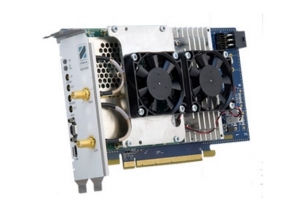
Teledyne SP Devices ADQ1600RF High Performance 14-Bit RF Digitizer
The Teledyne SP-Devices ADQ1600RF is a unique member of the ADQ V6 Digitizer family. Based on SP Devices’ interleaving technologies ADX and DBS, ADQ1600RF gets true 14bits performance at a Sampling Rate of 1.6 GSPS. This is an outstanding combination of high bandwidth and dynamic range, which enables demanding measurements such as direct RF/IF sampling of wide
band systems.Key Features:
- 750MHz Bandwidth
- Sampling Rates: 1.6 GSPS
- 14 Bit Resolution
- Single Channels
- Optimised for RF applications
- USB 3.0, 10GbE, PCIe, PXIe, MTCA.4
- Extensive Software Suites including stand alone operation
- Drivers for C/C++, MATLABTM and more
- Digitiser Studio Software
-
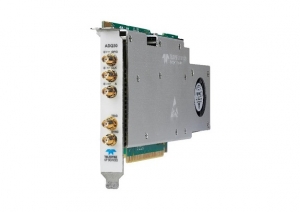
Teledyne SP Devices ADQ30 High Performance 12-Bit Digitizer
The Teledyne SP-Devices ADQ30 offers a Single Channel configuration with 1 GSPS Sampling Rate at a Vertical Resolution of 12 Bits. The programmable DC-offset makes it ideal for sampling unipolar signals. The open onboard Xilinx Kintex Ultrascale KU040 FPGA offers plenty of available resources for custom real-time digital signal processing (DSP). The ADQ30 supports peer-to-peer streaming of up to 7 Gbyte/s either to the host PC, to graphics processing units (GPUs), or solid-state disk (SSD) storage.
Key Features:
- 1 GHz Bandwidth
- Sampling Rates: 1 GSPS
- 12 Bit Resolution
- Single Channel
- Data Interface: PCIe Gen3 x8
- Extensive Software Suites including stand alone operation
- Drivers for C/C++ and more
- Digitiser Studio Software
-
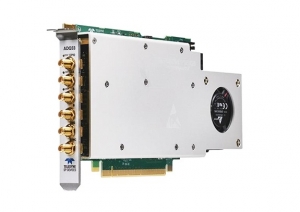
Teledyne SP Devices ADQ33 High Performance 12-Bit Digitizer
The Teledyne SP-Devices ADQ33 offers a Dual Channel configuration with up to 1 GSPS Sampling Rate at a Vertical Resolution of 12 Bits. The programmable DC-offset makes it ideal for sampling unipolar signals. The open onboard Xilinx Kintex Ultrascale KU040 FPGA offers plenty of available resources for custom real-time digital signal processing (DSP). The Software Development Kit (SDK) includes application programming interfaces (APIs) and drivers for C/C++ and more. It also comes with stand-alone software, Digitizer Studio, which makes it easy to get started. Most software components are supported both under Windows and Linux.. The ADQ33 supports peer-to-peer streaming of up to 7 Gbyte/s either to the host PC, to graphics processing units (GPUs), or solid-state disk (SSD) storage.
Key Features:
- 1 GHz Bandwidth
- Sampling Rates up to 1 GSPS
- 12 Bit Resolution
- Single/Dual Channel
- Data Interface: PCIe Gen3 x8
- Drivers for C/C++ and more
- Digitiser Studio Stand Alone Software
